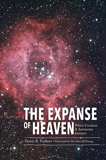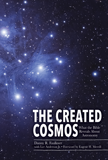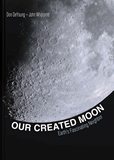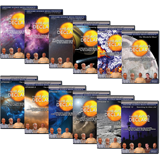
The Present and Future Functions of the Sun and the Moon
Abstract
There has been some debate among theologians as to whether the sun and the moon will exist in the eternal state. At first glance, 2 Peter 3:10–13 seems to be definitive on the subject, stating that the heavenly bodies will dissolve or melt and that the earth and her works will be exposed (ESV, NIV) or burned up (NKJV, RSV). Yet we know that God promises to create new heavens and a new earth (Isaiah 65:17; 2 Peter 3:13; Revelation 21:1) and will that mean a new sun and moon? Furthermore, there are several other passages which speak of the sun and moon after the new heavens and new earth are created. Whether spoken of negatively (relating to some aspect or function not being needed any longer) or positively, referring to signs and seasons, there are mentions of the sun and moon in the eternal state. In this article we lay out those verses and delve into what the Bible really says about the future of the sun and moon.
Signs and Seasons, Days and Years
When the sun and moon are first introduced in Scripture, they are not even named, simply called the greater and lesser lights (Genesis 1:16). The first mention of the sun by name, שׁמשׁ (shemesh—the most common Hebrew word for sun) does not occur until Genesis 15:12. The first mention of the moon by name ירח (yareach—the most commonly used name for moon) doesn’t appear until even later, in Genesis 37:9. But the purpose for the sun and moon is clearly laid out in Genesis 1:17–18. They are to give light on the earth, separate light from darkness and to rule the day and the night. Also, since they are part of the lights in the expanse of the heavens (Genesis 1:14), they are also given the function of delineating signs and seasons, and days and years.
In several other Scripture passages, these functions for both sun and moon are reiterated (Psalms 74:16, 104:19, 136:8–9, and Jeremiah 31:35). Other times the moon alone is mentioned in conjunction with feasts or things associated with the new moon from the Hebrew word חדשׁ chodesh as in Numbers 29:6; 1 Samuel 20:18; Psalms 81:3; and Amos 8:5).
Interestingly, there are four mentions of the sun in Job, and all four occurrences utilize a different Hebrew word. Job 8:16 uses shemesh, Job 9:7 uses חרס cheres which usually is translated as “itch” (and so may be euphemistically used of the sun causing sunburn). In Job 30:28, the Hebrew word used is חמה chammah, which refers to the heat of the sun, and finally in Job 31:26 the word אור ‘owr is used to denote the light of the sun.
In the New Testament, there is only one Greek word used for sun wherever it occurs, and that is ἥλιος helios. Likewise, there is only one Greek word translated as moon σεληνὴ̀ selene: with one exception. In Colossians 2:16, the phrase “new moon” is translated from the Greek word νουμηνιὰ̀ noumenia.
Although there are figurative, poetic, metaphorical and anthropomorphic usages of the word “sun” in Scripture (Genesis 37:9; Psalms 84:11 the “under the sun” passages throughout Ecclesiastes and the Messianic title in Malachi 4:2), the vast majority of times the word is speaking of our solar system’s sun. Likewise, there are three cases of figurative or poetic usages of the word “moon” in Scripture (Genesis 37:9, Song of Solomon 6:10 and Revelation 12:1), but all other times, the Hebrew or Greek word is referring to the earth’s moon.
Weeks and Months
As mentioned above, in addition to serving as the light sources for the earth during day and night, the sun and moon (as well as the stars) also are to serve as templates for signs and seasons, and days and years.
As mentioned above, in addition to serving as the light sources for the earth during day and night, the sun and moon (as well as the stars) also are to serve as templates for signs and seasons, and days and years. God explicitly ordained only one division of time, the week. It is a memorial to creation and thus has no natural basis. There are three natural divisions of time: day, month, and year. All are governed by astronomical bodies that God made on day four of the creation week. The solar day is the rotation period of the earth with respect to the sun; the day defines the light/dark cycle, so it obviously is important. The year is the orbital period of the earth. Alternately, the year is the period of the sun’s apparent motion through the stars. This is the period where the climatic seasons of spring, summer, autumn, and winter, cycle, so it is very important too. In between the day and year is the month, the orbital period of the moon. The synodic month, the cycle over which lunar phases repeat, is the basis of the calendar month.
Generally, the lunar cycle isn’t nearly as important as the daily and annual cycle, so it has far less significance for us. Consequently, Western culture abandoned the strictly lunar basis for the month more than 2,000 years ago. However, the Jewish calendar still preserves observance of lunar phases as the basis for the month. Why the difference? The Old Testament feasts (Passover, Pentecost, and Feast of Tabernacles) are observed on specific dates tied to the phases of the moon. For instance, Passover always commences on a full moon. In fact, the seasons mentioned in Genesis 1:14 as a function of the heavenly bodies does not refer to the climatic seasons. Rather, the Hebrew word used there, מוֹעֵד moed, in all post-Genesis occurrences, refers to these feasts. This Hebrew word means an appointed time, place, or meeting. Instead of climatic seasons, think of seasons in the context of an appointed time for some activity, such as deer-hunting season or baseball season. Since God ordained the timing of the feasts, maintaining a lunar calendar (technically, a lunisolar calendar) the moon is very important in observing these feasts.
A Future Change of Function or a Cessation?
Isaiah 60:19–20; Revelation 21:23, and 22:5 all mention that the sun and moon will no longer be necessary for light, for God and the Lamb (the Lord Jesus Christ) will be the light source for the new earth and New Jerusalem.
But from a look at prophetic passages in Scripture, particularly those dealing with the new heavens and new earth and New Jerusalem, we see that a change is to take place regarding (at least) the sun and moon. Isaiah 60:19–20; Revelation 21:23, and 22:5 all mention that the sun and moon will no longer be necessary for light, for God and the Lamb (the Lord Jesus Christ) will be the light source for the new earth and New Jerusalem.
Consequently, this has led to differing schools of thought regarding the sun and moon. Will they be completely done away with, or will they still serve some function in the future eternal state? As a ministry, Answers in Genesis does not endorse any particular view of eschatology, and this question is one which (covering events which are yet to come) could quickly become mired in such discussion. However, this is not the purpose of this paper, which is to simply look at biblical passages that address this subject. Within the various orthodox positions that hold to a future, bodily return of Jesus, a judgment unto eternal life or death, and existence in an eternal state described as the new heavens and earth, there are differing understandings. Please consider the following an exploration of those biblical passages and not dogmatic claims about the future of the heavenly bodies.
When looking over passages which actually mention the new heaven(s) and new earth by name, we see that there are relatively few—namely Isaiah 65:17 and 66:22; 2 Peter 3:13; and Revelation 21:1. New Jerusalem is mentioned by name only in Revelation 3:12 and Revelation 21:2, and with a slightly different term used in Revelation 21:10, but it is the focus of all of Revelation 21 as well as Revelation 22:1–5. However, there are also quite a few allusions to the new heavens and new earth (Isaiah 60:19–20, 65:18–25; Matthew 13:43; Hebrews 12:22–23; and Revelation 2:7). There are also several other passages that some theologians have claimed are allusions to the new heavens and new earth, but which other theologians disagree with, saying they are referring to past events, future events before the eternal state or even present-day events.
For the purpose of this article though, we will focus only on passages that address the sun and moon and are clearly referring to future events. We’ll leave discussion of where they fit to others, but perhaps just examining them will shed some light (no pun intended) on the future function of the sun and moon.
Possible Future Purposes?
Isaiah 66:23, immediately after mentioning the new heavens and new earth, states that “from new moon to new moon, and from Sabbath to Sabbath, all flesh shall come to worship before me, declares the LORD.” The Hebrew word for “new moon” here is חדשׁ chodesh, which occurs 276 times in the Old Testament. It is variously translated as month, monthly or new moon. In the ancient Jewish calendar, each month began with the sighting of the new moon. While there is some disagreement on whether this passage is strictly speaking about the phase of the moon or just the passage of time, we must remember that to the Israelites Isaiah was addressing, the month and the phase of the moon were inseparable; the terms are interdependent.
We already referenced Isaiah 60:19, which mentioned that the sun and moon will not be needed for light, as God will be the new earth’s light, but verse 20 says something very interesting.
Your sun will no longer set, and your moon will not fade; for the LORD will be your everlasting light, and the days of your sorrow will be over. (Isaiah 60:20 HCSB)
This is curious phrasing here. If the sun and moon (shemesh and yareach-the normal Hebrew words for the sun and moon) were done away with, wouldn’t the wording here make that clear instead of leaving the reader with the impression that the sun will be visible at all times and the moon’s phases will be altered? Why not just plainly state that “there will no longer be a sun or moon”? Admittedly there are some who argue that this could be what the verse is implying—that there will be no more sunsets and no more phases of the moon because they will be gone from the sky, but the Hebrew doesn’t specifically state this, and no English translation even hints at a complete removal of these “signs” in the sky.
Providential Protection or Poetic Imagery or Both?
Another passage that is often mentioned as alluding to the future new heavens and new earth is Revelation 7:16–17. Since verse 17 uses wording that is also used in Revelation 21:4 (i.e., “God will wipe away every tear from their eyes”), this seems to be a safe interpretation. But verse 16 tells us, referring to the people who are to have their tears wiped away, that “the sun shall not strike them, nor any scorching heat.” Again, this is a puzzling phrase. Some view the passage here as an example of a metaphor using poetic imagery, with the meaning being that no harm can come to believers in the new heavens and earth. However, this would apply to the believer not experiencing hunger and thirst as mentioned in the verse as well, and yet we know that there will be food and drink in the eternal state (Matthew 26:29; Luke 22:30; Revelation 2:7, 22:1–2). The use of poetic imagery does not necessitate that the literal reality of the topic being discussed doesn’t exist. But if the meaning here has a literal basis and the intent of John (through the inspiration of the Holy Spirit) are to tell us that the sun cannot scorch us because it will be done away with by the time of the new heavens and earth, then why does John even mention the sun here at all? Or why not directly state that it will (or does at a certain point) no longer exist? Or does this verse mean that the sun will still provide heat but will be prevented from causing sunburn and heatstroke? Commentator Albert Barnes takes this meaning as he mentions in his notes on this verse:
[T]he reference, probably is to the intense and burning heat of the sun, commonly called a sunstroke. Excessive heat of the sun, causing great pain or sudden death, is not a very uncommon thing among us, and must have been more common in the warm climates and burning sands of the countries in the vicinity of Palestine. The meaning here is, that in heaven they would be free from this calamity . . . The expression here is equivalent to intense heat; and the meaning is, that in heaven the redeemed will not be subjected to any such suffering as the traveler often experiences in the burning sands of the desert.1
The passage in Revelation 7:16 is a quote from the first half of Isaiah 49:10, which itself may be an allusion back to Psalm 121:6. That verse states, “The sun shall not strike you by day, nor the moon by night”. Psalm 121 is one of the “Songs of Ascent” or “Songs of Degrees,” which worshippers on their way up (in elevation) to Jerusalem would have recited. Prior to the Exile, these worshippers were going to the city where God’s shekinah glory was present in the Temple. As such there is an easy correlation with the eternal state and the New Jerusalem, where righteousness dwells. If indeed the three passages (Revelation 7:16; Isaiah 49:10; and Psalm 121:6) are all referring to the same thing—going up to the city where God dwelt (and will one day dwell again in the New Jerusalem)—then the passages are ultimately looking ahead to the new heavens and new earth. If this is the case, then both sun and moon are in thought here. Many commentators view the “moon” section of Psalm 121:6 as referring to the cold night air, as in desert areas the nighttime temperature can drop precipitously from daytime highs. For example, Adam Clarke succinctly sums this verse up and parallels the thoughts of many other commentators:
I believe the psalmist simply means, they shall not be injured by heat nor cold; by a sun-stroke by day, nor a frost-bite by night.2
Certainly, God could have providentially and universally kept all pilgrims traveling up to Jerusalem in pre-exilic times from danger, but is that what this verse is teaching? It seems very unlikely that no one from the time of David until the exile ever got sunstroke or grew cold at night, although it is quite possible that God providentially aided pilgrims to the tabernacle and later the temple to some extent, since he had commanded them to go three times a year to what would later be determined to be Jerusalem (Deuteronomy 12:11, 12:26, 14:24–25, 16:2–6, 16:13–16). But this verse is pointing forward to a greater reality: one which is expanded on in Isaiah 49:10 (especially the extended context of verses 10–13) and further expanded to the eternal state in Revelation 7:16.
This thematic agreement between the three passages supports the likelihood of there being some poetic and metaphorical imagery in regard to God being able to perfectly keep his people from suffering harm in the new earth. But in order for the metaphor to make any sense in Psalm 121:6, it must be based on literal weather conditions caused (or influenced) by a literal sun and moon, which pilgrims to Jerusalem would have dealt with. This can be seen as support for a literal sun and moon in the prophetic passages as well.
A Faithful Witness in the Skies
In Psalm 72:4-5, Solomon declares his desire that God defend the cause of the poor, give deliverance to the children of the needy, and crush those who oppress them. He then ties the fear of the Lord to the endurance of the sun and moon throughout all generations. In Psalm 89:34–37 (NKJV), Ethan the Ezrahite recounts God’s unbreakable promise to David, who conditions that promise to David’s throne being “as long as the sun before me. Like the moon it shall be established forever, a faithful witness in the skies." Ultimately being a Messianic promise from God the Father to the Son (Luke 1:32), it seems almost inconceivable to then hold to a complete dissolution and cessation of the sun and moon in the future state. Also the phrase “a faithful witness in the skies” may actually be giving a hint of the future function of the moon, which ties back into Genesis 1:14, that the moon (and the sun) will still be a witness for “signs and seasons.”
What About the Heavens Melting?
How then do we handle 2 Peter 3:10–13, which addresses the destruction of this present world?
But the day of the Lord will come like a thief, and then the heavens will pass away with a roar, and the heavenly bodies will be burned up and dissolved, and the earth and the works that are done on it will be exposed. Since all these things are thus to be dissolved, what sort of people ought you to be in lives of holiness and godliness, waiting for and hastening the coming of the day of God, because of which the heavens will be set on fire and dissolved, and the heavenly bodies will melt as they burn! But according to his promise we are waiting for new heavens and a new earth in which righteousness dwells.
More than any other biblical passage, these verses explicitly speak of the present world being done away with. It twice states that along with the heavens, the heavenly bodies will be consumed. It also says that the earth will be destroyed. The necessity of this process appears to be to purge the creation of the taint of sin (Romans 8:18–25). It goes on to state that the earth will be remade. The restoration of the earth is paired to the restoration of the heavens. Since the creation week, the heavens (the habitat) has been intimately connected to the heavenly bodies (its inhabitants). The implication is that, like the earth, the heavenly bodies will be reconstituted.
What about the three passages (Isaiah 60:19-20; Revelation 21:23 and 22:5) most often cited as evidence that the sun and moon will not exist in the future state? Notice that they don’t actually say that the sun and moon won’t continue to exist. Rather, the emphasis of these verses is upon the need of the light of the sun and moon to see. That is, providing light, which is an important function of the sun and moon now, may not be a function of these bodies in the next world. But the wording doesn’t mandate that the sun and moon won’t exist in the new heavens and new earth.
Conclusion
We acknowledge that Christians who hold the Bible to be the authority in all things may still have differing views on this topic and therefore we cannot be dogmatic on the subject. But we would point out that Scripture only definitively says that the sun and moon will no longer be needed for light in the new heavens, New Jerusalem, and the new earth—it never says anything about them being completely done away with. But several other passages (as we have highlighted) do seem to directly state or hint that there will be a purpose for the sun and moon in the eternal state. Those future functions may still include heat for the new earth, markers for times and seasons, and/or just as they serve now, to bring praise to their Creator (Psalms 148:3).
Answers in Depth
2021 Volume 16
Answers in Depth explores the biblical worldview in addressing modern scientific research, history, current events, popular media, theology, and much more.
Browse VolumeFootnotes
- Albert Barnes, “Note on Revelation 7:16,” Barnes Notes Commentary, https://www.studylight.org/commentaries/bnb/revelation-7.html.
- Adam Clarke, “Note on Psalm 121:6,” Commentary on the Whole Bible, https://www.studylight.org/commentaries/acc/psalms-121.html.
Recommended Resources

Answers in Genesis is an apologetics ministry, dedicated to helping Christians defend their faith and proclaim the good news of Jesus Christ.
- Customer Service 800.778.3390
- © 2024 Answers in Genesis





